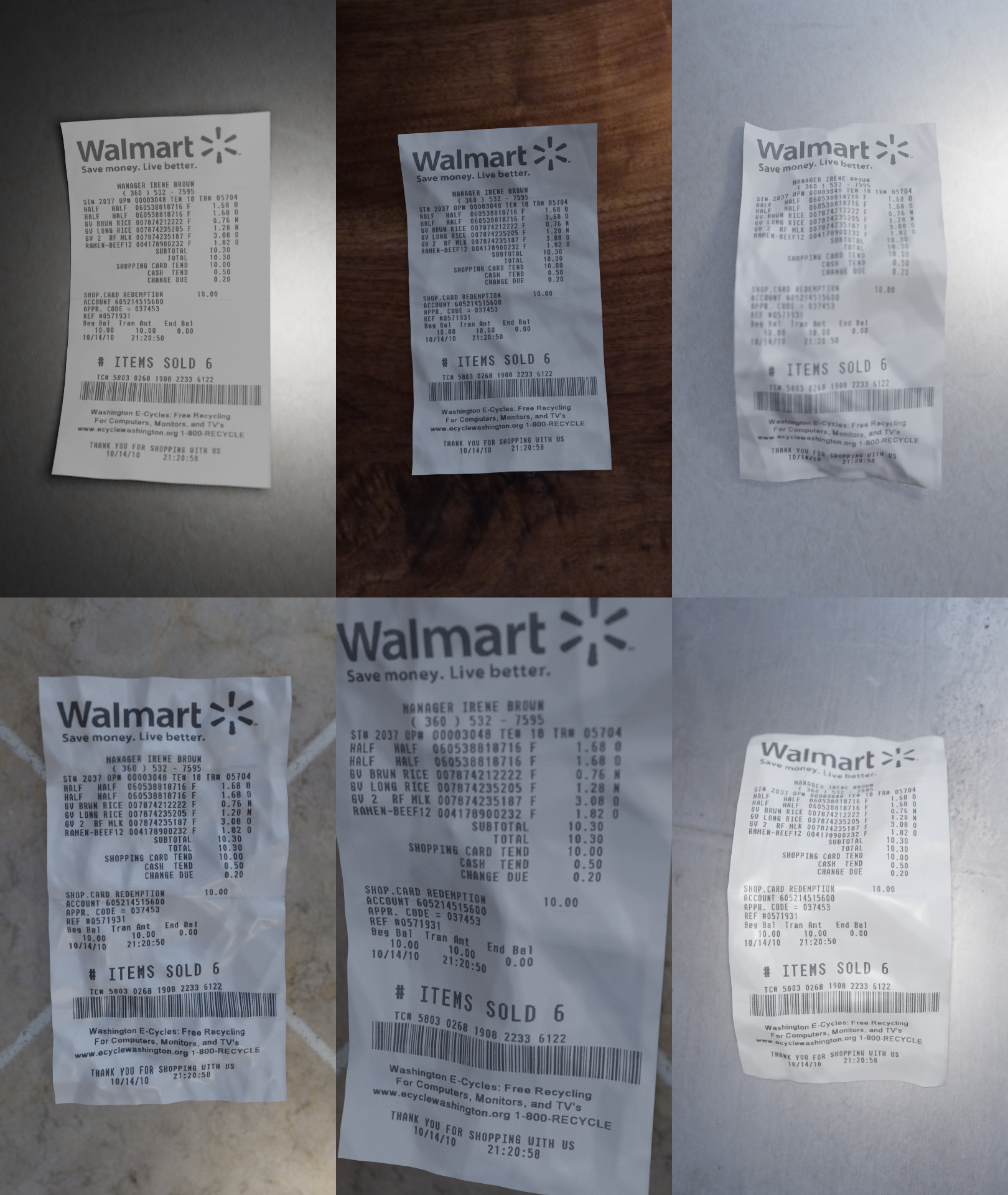An simple framework for generating images of fake receipts in different degenerate scenarios. This is part of my application to Metabrite. I imagine this is probably similar to something they already have for their automated testing environment, to test the accuracy of the CV text extraction code.
The framework randomizes the following attributes within acceptable parameters to produce a realistic phone photographs:
- Receipt crinkliness
- Receipt curvature
- Receipt alignment with camera
- Receipt ink fadedness
- Receipt paper glossiness
- Table material
- Camera flash
- Camera location
- Camera direction
- Camera exposure
- Camera focal distance
- Camera aperature size
- Environment ambient brightness
- Primary light location
First build the docker image:
./build.sh
This produces the image amoffat/receipts
Run container and generate receipts using the generate_receipts.sh command.
Renders will be output in the ./renders directory.
usage: generate_receipts.sh [-h] [-f NUM] [-s WxH]
optional arguments:
-h, --help show this help message and exit
-f NUM, --frames NUM The number of frames to render
-s WxH, --size WxH Size of the rendered output
./generate_receipts.sh --size 540x960 --frames 3
The receipt is currently hardcoded to use the Walmart scanned receipt. It would
be trivial to add a scan image as a parameter to the generate_receipts.sh
script.
When renders are produced through docker, Blender uses the CPU. Using the GPU is less than trivial, but certainly doable, and would speed up docker renders by about 10x.
The upper and lower limits of the variables we randomly tweak in the scene are
hardcoded in receipts.py. Ideally, we should be able to pass in a JSON
document describing the upper and lower bounds of these adjustments, along with
a distribution function (some vars perform better with triangular distributions,
and other with uniform distributions).
